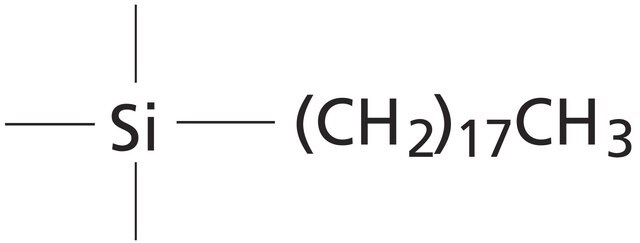52664-U
Discovery® DSC-SAX SPE Tube
bed wt. 500 mg, volume 3 mL, pk of 54
Synonym(s):
SAX SPE cartridge tube, Strong Anion Exchange
About This Item
Recommended Products
material
polypropylene tube
composition
bed wt., 500 mg
packaging
pk of 54
technique(s)
solid phase extraction (SPE): suitable
surface area
480 m2/g
volume
3 mL
matrix
Silica gel base material (irregularly shaped, acid washed)
matrix active group
ammonium ion, quaternary bonding, polymerically bonded, chloride counter-ion
particle size
50 μm
pore size
0.9 mL/g pore volume
70 Å pore diameter
capacity
0.14 meq/g total capacity
application(s)
food and beverages
separation technique
ion exchange
Looking for similar products? Visit Product Comparison Guide
General description
Sample Matrix Compatibility: Organic or aqueous solutions
- A polymerically bonded quarternary amine that remains positively charged at all pH levels
- Counter ion is Cl-
- Ion exchange capacity is ∼ 0.14 meq/g
- Commonly used when extracting weaker anions (e.g., carboxylic acids) that may not bind strongly enough to weaker anion-exchangers
- Selectivity can be modified by changing the counter ion with the appropriate buffer during conditioning
Legal Information
Storage Class
11 - Combustible Solids
wgk_germany
WGK 3
flash_point_f
>464.0 °F
flash_point_c
> 240 °C
Choose from one of the most recent versions:
Already Own This Product?
Find documentation for the products that you have recently purchased in the Document Library.
Articles
SPE retention mechanism in this case is based on the electrostatic attraction of charged functional groups of the analyte(s) to oppositely charged functional groups on the sorbent.
Protocols
Retention occurs through polar interaction between the sorbent and analytes. Typical sample matrices that can be employed in normal-phase SPE include hydrocarbon or fatty oils diluted in a solvent like hexane, isooctane, chlorinated solvent, THF, diethyl ether, or ethyl acetate.
Our team of scientists has experience in all areas of research including Life Science, Material Science, Chemical Synthesis, Chromatography, Analytical and many others.
Contact Technical Service




